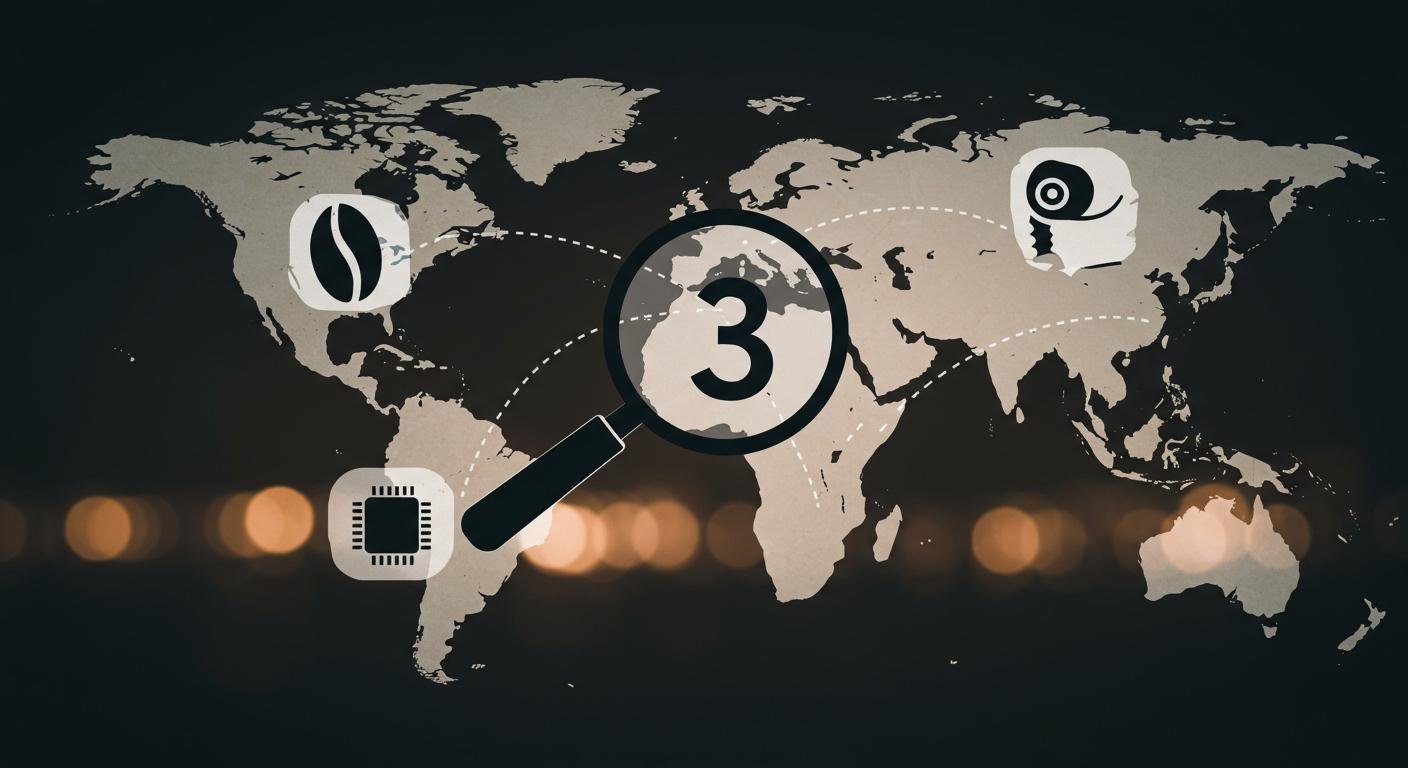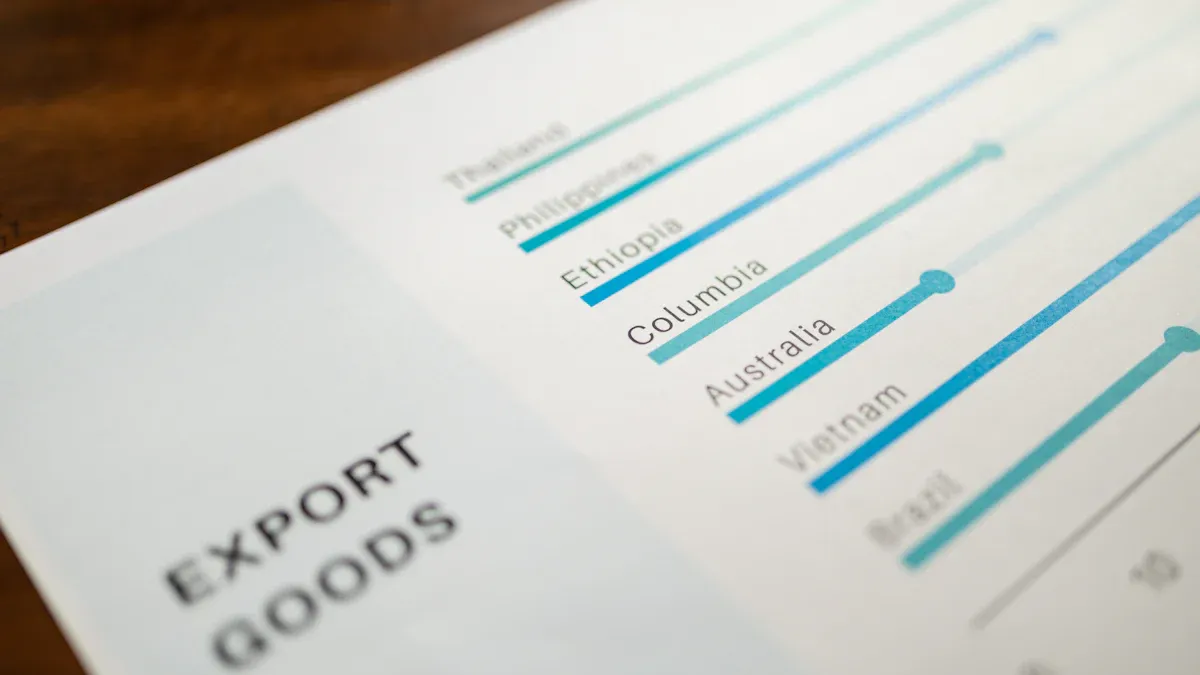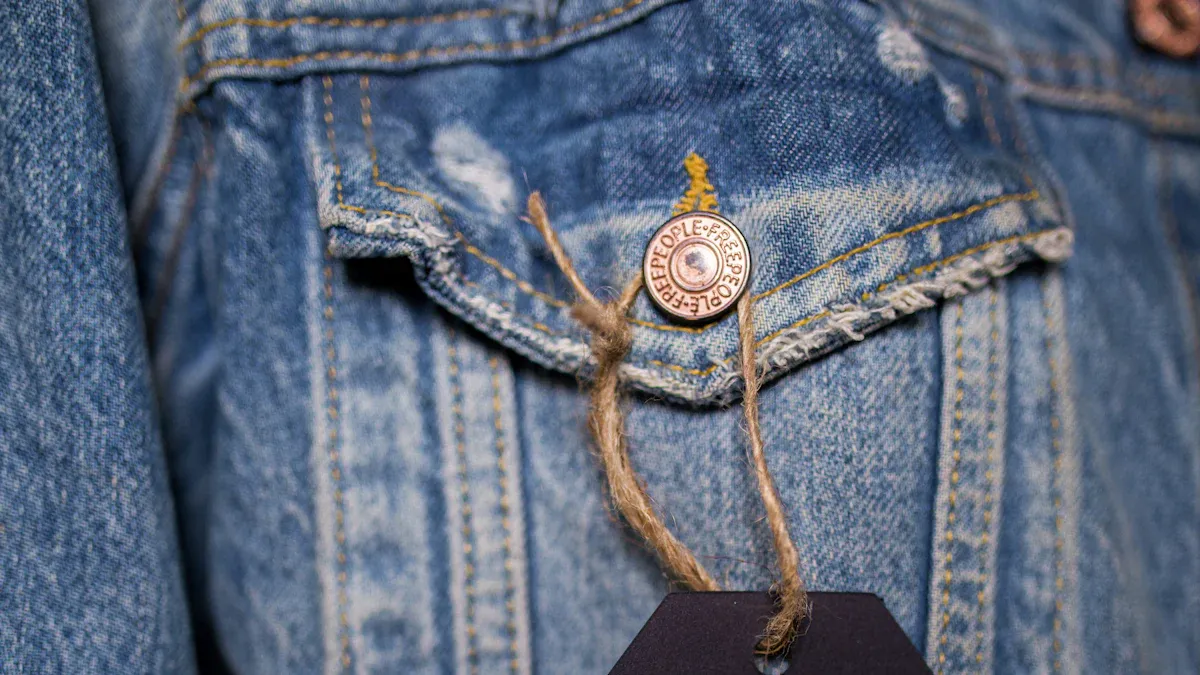Country of Origin 3 Key Differences You Should Know
Table of Contents

People often confuse a product’s country of origin with its country of manufacture. The country of origin is a legal nationality used for international trade. The place of manufacture is simply the factory’s physical address. These two are frequently different. This distinction affects product prices, quality perception, and the legal “Made In” label.
💡 Simple Analogy: Think of a famous dish. Its origin is tied to its unique recipe and main ingredient. The specific kitchen where someone assembled it is less important.
DEFINING THE COUNTRY OF ORIGIN VS. MANUFACTURE

The country of origin is a legal status, while the place of manufacture is a logistical fact. This core difference has major financial and legal consequences for businesses and consumers.
TARIFFS AND TRADE RULES
Customs agencies, like U.S. Customs and Border Protection, use a product’s country of origin to apply tariffs, taxes, and import quotas. This legal designation determines the final cost of an item. For example, cotton shirts imported from Vietnam can face U.S. tariffs as high as 46%. In contrast, the same shirts from Mexico receive duty-free tariff treatment under the United States-Mexico-Canada Agreement (USMCA).
Trade agreements establish specific rules of origin to define which products qualify for this preferential tariff treatment. Many agreements, including the CAFTA-DR and the Chile FTA, contain their own unique rules of origin. These rules of origin are critical for importers. U.S. law requires that every foreign article be marked to show its country of origin.
Legal Marking Requirements The mark must be:
- Legible: Easy for a person with normal vision to read.
- Conspicuous: Placed where it is easily seen during casual handling.
- Permanent: Designed to remain on the product until it reaches the final buyer.
These rules of origin ensure that only eligible goods receive favorable tariff treatment. Following the rules of origin is not optional; it is a legal requirement for preferential tariff treatment.
THE ROLE OF MANUFACTURING LOCATION
The manufacturing location is simply the physical address of the factory where a product was assembled. This logistical detail does not, by itself, determine the country of origin or eligibility for special tariff treatment. A product may be assembled in one country using key components from another. The complex rules of origin dictate its final status. For instance, a product might be processed in a way that changes its identity, affecting its final u.s. origin status upon import.
Confusing these two concepts can lead to serious penalties. Falsely declaring a country of origin to avoid duties is a form of customs fraud. Violators can face severe consequences under the False Claims Act, including paying triple the amount of the underpaid duties. The rules of origin provide the framework for correct declaration, and ignoring them carries significant risk.
THE ‘SUBSTANTIAL TRANSFORMATION’ TEST
The “substantial transformation” test is the central idea within the rules of origin. It determines a product’s legal country of origin. This test helps customs officials decide if a product was fundamentally changed in a country.
WHAT IS SUBSTANTIAL TRANSFORMATION?
Substantial transformation creates a new and different article. The new product has a distinct name, character, or use compared to its original parts. This concept is a cornerstone of the rules of origin. For example, baking cookies from raw ingredients is a substantial transformation. Melting down scrap metal and adding gemstones to create a necklace also qualifies. The original materials lose their identity and become part of something entirely new.
However, many simple processes do not count. The rules of origin exclude minor operations like:
- Screwdriver assembly of pre-made parts
- Simple packaging or sorting
- Purifying a crude substance
These actions do not change the essential character of the components. A court case, Nat’l Hand Tool, established that even skillful manual assembly did not qualify because the parts’ names and uses were already predetermined. The rules of origin require a more fundamental change.
FINAL ASSEMBLY VS. TRANSFORMATION
Final assembly is not always a substantial transformation. The location of assembly might be different from the product’s country of origin. The rules of origin focus on where the most important change happened.
📱 Smartphone Example: A smartphone may be assembled in China. This makes China its place of manufacture. However, its most critical component, the processor “brain,” was designed and made in the United States. U.S. Customs may decide the processor’s creation was the substantial transformation. This would make the United States the phone’s country of origin.
U.S. Customs and Border Protection examines if an operation is “meaningful or complex.” Officials consider the skill level, value added, and number of components. The key question is whether the imported parts lose their identity. The rules of origin help determine if the “essence” of a component changes. A change in the product’s tariff classification code is another strong signal that a transformation occurred, reinforcing the legal framework of the rules of origin.
LABELING AND CONSUMER PERCEPTION

A product’s origin label does more than state a fact; it shapes how customers see the product. This perception directly influences branding, trust, and a buyer’s final decision.
PRODUCT LABELING RULES
Regulations often require the “Made In” label to reflect the legal country of origin. This label is not interchangeable with phrases that describe manufacturing. For example, the U.S. Federal Trade Commission (FTC) has very strict rules for a “Made in USA” claim.
“Made in USA” Standard A product must meet these conditions to carry the label:
- Final assembly must happen in the United States.
- All significant processing must occur in the United States.
- All or virtually all components must be made and sourced in the United States.
A company cannot use this label if the product was only assembled in the U.S. from foreign parts. Instead, it might use a qualified claim like “Assembled in USA from foreign components.” This phrase clarifies the manufacturing location without misstating the product’s origin.
CONSUMER PERCEPTION AND BRANDING
A product’s country of origin often acts as a shortcut for quality. This marketing strategy is called place-based branding. Consumers associate certain countries with excellence in specific industries. For example, the reputation of French wine strongly influences buying attitudes, as shoppers often link its origin to superior quality.
This effect is powerful in the luxury market. A watch can only be labeled “Swiss Made” if it meets strict legal standards.
- Its technical development occurs in Switzerland.
- At least 60% of its manufacturing costs are generated in Switzerland.
- The manufacturer performs the final inspection in Switzerland.
These rules protect the “Swiss Made” reputation, allowing brands to build a premium image. The label tells a customer they are buying a product with a long history of quality craftsmanship, making the origin a key part of the brand’s identity.
A product’s country of origin is a legal concept based on transformation, not just its assembly location. These two ideas are fundamentally different.
This summary highlights the three main distinctions:
- Legal vs. Factual: Origin determines tariffs and trade rules; manufacture is a logistical address.
- Process: Origin is defined by ‘substantial transformation’; manufacture often involves final assembly.
- Labeling: Origin dictates the official ‘Made In’ label; manufacture provides context like ‘Assembled In’.
💡 Knowing this distinction empowers consumers and businesses to navigate the global marketplace more effectively.
FAQ
What is the main difference between origin and manufacture?
A product’s country of origin is its legal nationality for trade. This status determines tariffs. The place of manufacture is simply the factory’s physical address. These two locations are often not the same.
Why does country of origin affect prices?
Customs agencies use a product’s origin to apply taxes and import duties. A different country of origin can lead to higher or lower tariffs. This process directly changes the final price for consumers.
Can a product be ‘Assembled In’ and ‘Made In’ different countries?
Yes. The “Made In” label reflects the legal country of origin where substantial transformation happened. The “Assembled In” label describes the location of final manufacturing.
A company might label a product “Assembled in Mexico from German parts.” Here, Germany could be the country of origin.
What if a product is only assembled in a country?
Simple assembly does not typically change a product’s origin. The country of origin is where the product underwent its “substantial transformation.” This is the place where it gained its essential character and name.

Poseidon
Master of Nutritional Epidemiology, University of Copenhagen, Herbal Functional Nutrition Researcher
Focus: The scientific application of natural active ingredients such as Tongo Ali, Horny Goat Weed, and Maca to sexual health and metabolic regulation.
Core Focus:
Men: Use a combination of Tongo Ali (an energizing factor) + Maca (an energy reserve) to improve low energy and fluctuating libido.
Women: Use a combination of Horny Goat Weed (a gentle regulator) + Maca (a nutritional synergist) to alleviate low libido and hormonal imbalances.
Stressed/Middle-Aged Adults: This triple-ingredient synergy supports metabolism, physical strength, and intimacy.
Product Concept:
Based on traditional applications and modern research (e.g., Tongo Ali promotes testosterone-enhancing enzyme activity, and icariin provides gentle regulation), we preserve core active ingredients and eschew conceptual packaging—using natural ingredients to address specific needs.
Simply put: I'm a nutritionist who understands "herbal actives." I use scientifically proven ingredients like Tongo Ali, Epimedium, and Maca to help you make "sexual health" and "nutritional support" a daily routine.
